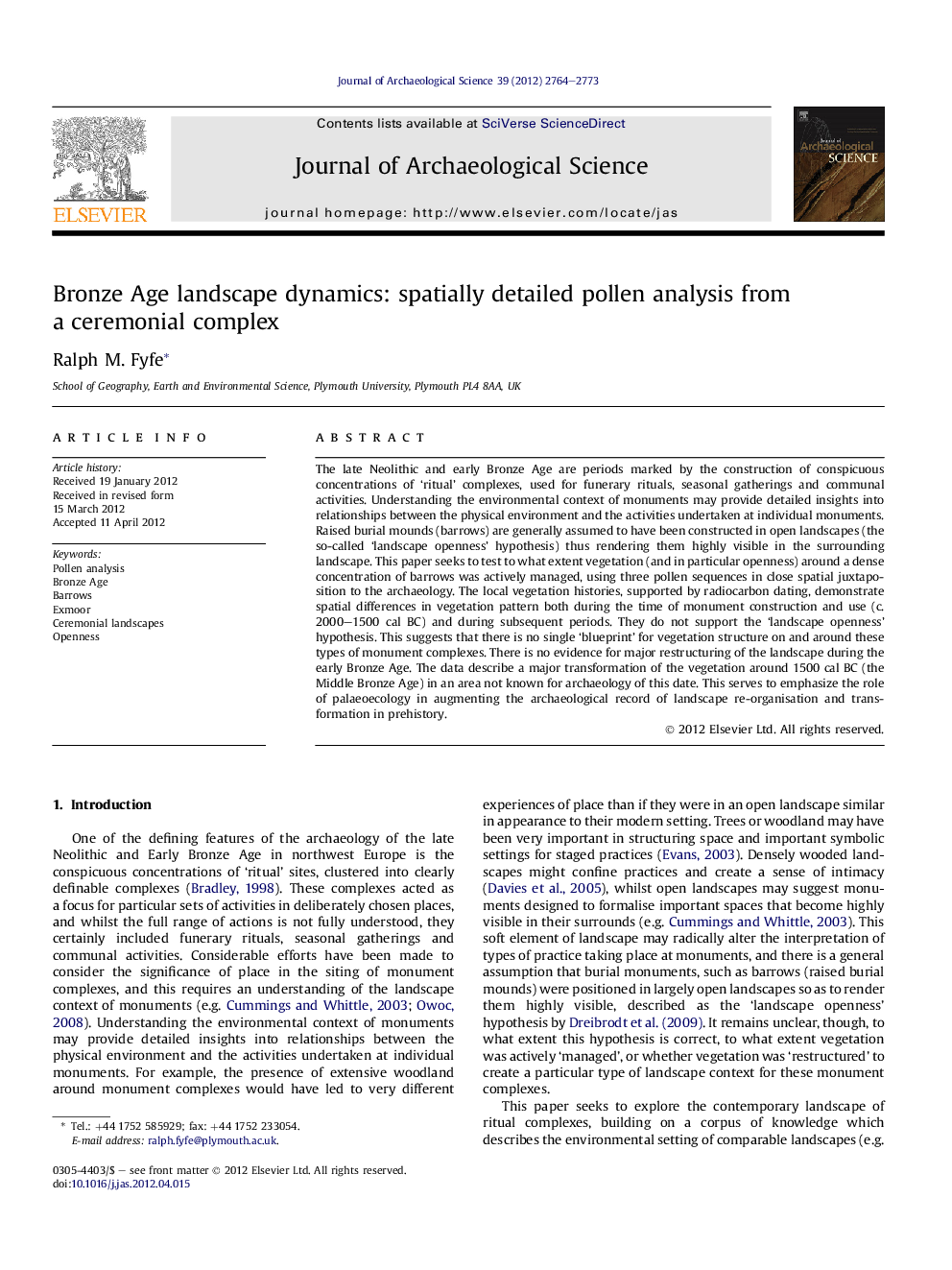| کد مقاله | کد نشریه | سال انتشار | مقاله انگلیسی | نسخه تمام متن |
|---|---|---|---|---|
| 1035629 | 943860 | 2012 | 10 صفحه PDF | دانلود رایگان |

The late Neolithic and early Bronze Age are periods marked by the construction of conspicuous concentrations of ‘ritual’ complexes, used for funerary rituals, seasonal gatherings and communal activities. Understanding the environmental context of monuments may provide detailed insights into relationships between the physical environment and the activities undertaken at individual monuments. Raised burial mounds (barrows) are generally assumed to have been constructed in open landscapes (the so-called ‘landscape openness’ hypothesis) thus rendering them highly visible in the surrounding landscape. This paper seeks to test to what extent vegetation (and in particular openness) around a dense concentration of barrows was actively managed, using three pollen sequences in close spatial juxtaposition to the archaeology. The local vegetation histories, supported by radiocarbon dating, demonstrate spatial differences in vegetation pattern both during the time of monument construction and use (c. 2000–1500 cal BC) and during subsequent periods. They do not support the ‘landscape openness’ hypothesis. This suggests that there is no single ‘blueprint’ for vegetation structure on and around these types of monument complexes. There is no evidence for major restructuring of the landscape during the early Bronze Age. The data describe a major transformation of the vegetation around 1500 cal BC (the Middle Bronze Age) in an area not known for archaeology of this date. This serves to emphasize the role of palaeoecology in augmenting the archaeological record of landscape re-organisation and transformation in prehistory.
► Three local vegetation histories record changes in a Bronze Age ‘ritual’ landscape.
► Early Bronze Age burial mounds were constructed in semi-open landscapes.
► The ‘landscape openness’ hypothesis for burial mounds is rejected.
► Major restructuring of Middle Bronze Age vegetation is clear.
Journal: Journal of Archaeological Science - Volume 39, Issue 8, August 2012, Pages 2764–2773